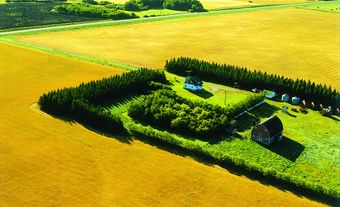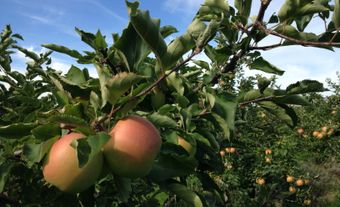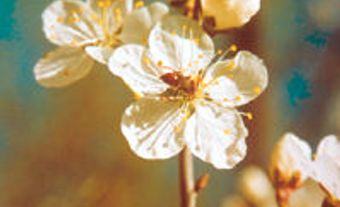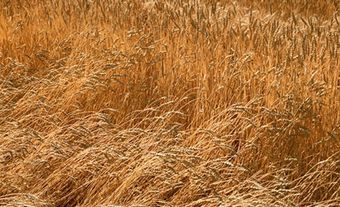Plant Gene Resources of Canada (PGRC) is part of Agriculture and Agri-Food Canada. As Canada’s national seed gene bank it protects, preserves and enhances the genetic diversity of Canada’s important agricultural plants and their wild relatives (see Genetics; Seed Plants). Since its foundation in 1970, PGRC has played a major role in protecting Canada’s agricultural crops (see Agriculture in Canada). In doing so, it also helps protect biodiversity, which is disappearing in many places, and contributes towards food security at home and around the world. (See also Food insecurity in Canada.)
Click here for definitions of key terms used in this article.

What is Plant Gene Resources of Canada?
Plant Gene Resources of Canada (PGRC) is part of Agriculture and Agri-Food Canada, which oversees federal policies related to agriculture and food. As Canada’s national seed gene bank, PGRC’s mandate is to protect, preserve and enhance the genetic diversity of Canada’s important agricultural plants and their wild relatives (see Genetics; Seed Plants). Canada’s official plant conservation initiative began in 1968. In that year, Canada’s first national policy was adopted to permanently preserve plant germplasm (usually seeds, but also plant tissue such as leaves, stems or even pollen) in seed banks and nurseries. Under this policy, PGRC was established in 1970.
PGRC’s seed banks are special rooms, called vaults, that can be kept at specific temperature and humidity levels. These conditions ensure that seeds remain alive or viable, so that when needed (mostly by researchers and plant breeders) they can be taken out of storage and successfully grown. Before being placed into long-term storage, seeds must first be put into 30-day storage, where they are put into paper envelopes and stored at 4°C and 20 per cent relative air humidity. The seeds can then be safely put into a long-term storage vault. In this vault, seeds are transferred into airtight envelopes and stored at -20°C. Some seeds can be kept alive at this temperature for hundreds of years. Other seeds need to be taken out on a regular schedule and grown into plants. The fresh seeds are collected from these plants and stored in the special vaults. Even seeds that can live for extended periods in storage need to be taken out and gown into plants to produce seeds. This often happens when a great number of seeds of one variety have been shared with other researchers such as plant breeders (see plant breeding).
PGRC’s Seed Banks
PGRC’s seed banks are located in three provinces. Each seed bank has its own specialization. The Saskatoon Research and Development Centre is the PGRC national headquarters and it is located in Saskatchewan. It preserves seeds of cereal crops (such as wheat), wild relatives of various crops, and seeds of canola, mustard and camelina (an oilseed). Over 115,000 seed samples are stored here. In New Brunswick, the Fredericton Research and Development Centre preserves potato germplasm. The third location of PGRC is located in Ontario at the Harrow Research and Development Centre. The Harrow centre stores the germplasm of fruit trees and small fruits, such as strawberries. (See also Cultivated Berries; Wild Berries in Canada.)
Function of PGRC
PGRC was established to help conserve and preserve viable germplasm of Canada’s hundreds of agricultural crop plants. Plant germplasm contains a plant’s genetic information, which plant breeders study and use to create new plants (see plant breeding). The germplasm preserved by PGRC include seeds and tissues from plants currently grown in Canada, from plant relatives found in wild places, or from agricultural plants no longer grown commercially.
It is important for PGRC to preserve such a wide variety of plants because Canadian food producers are facing many challenges due to climate change. The types of plants or plant traits that will be important for future plant breeders is unclear. Present-day plant breeders need to anticipate future needs and create improved plant varieties that can grow successfully in changed climatic conditions. This means that plant breeders need to be able to choose from a wide range of plants to use in their breeding programs. By studying and breeding a diverse variety of plants, plant breeders can grow plants that can overcome new conditions such as drought or flooding, attacks from new pests or diseases, and changed temperatures.
PGRC in the World
Seed banks around the world were established to protect the biodiversity (that is, the balanced mix of plant, animal and insect life) of an area or country. Protecting biodiversity, which is disappearing in many places, helps ensure that people will have dependable food crops. Seed banks also help ensure that food crops will be sustainable, meaning that future plant varieties can be created when needed ( see Sustainability in Canada). Most of Canada’s agricultural crops originally came from other countries. Therefore, it is important that PGRC has access to seed banks around the world so that researchers can experiment with parent plants and their relatives. For example, a plant breeder might experiment with a plant variety that grows in an extremely dry area (see Plant Breeding).
PGRC participates in a worldwide network of over 20 seed banks linked by the Germplasm Resource Information Network (GRIN) database software. The network is like a library of plant material. Participating seed banks collect, preserve, study, increase and distribute information and plant germplasm through GRIN. A researcher or plant breeder using this database software, no matter which country they work in, can find information on a seed bank’s holdings, specific details of a plant’s growing conditions, and a plant’s characteristics. Users of these software databases can easily order seeds, free of charge, from any participating seed bank to test in their home institution. In addition to making Canada’s own plant resources available, PGRC also maintains the world’s base collection of barley and oat seeds and a copy of the world’s base collection of pearl millet, oilseeds and crucifer seeds (which include cabbage, broccoli, cauliflower and Brussels sprouts).
Together, plant breeders and researchers work to ensure the world’s food plants are preserved for future use.
Key Terms
Biodiversity – The variety of life on Earth (from genes and species to ecosystems) (see Biodiversity).
Germplasm – Seeds, pollen or plant parts. These natural resources contain a plant’s genetic information and can be used in plant breeding.
Sustainability – The ability of the biosphere, or of a certain resource or practice to persist in a state of balance over the long term (see Sustainability in Canada).

 Share on Facebook
Share on Facebook Share on X
Share on X Share by Email
Share by Email Share on Google Classroom
Share on Google Classroom






